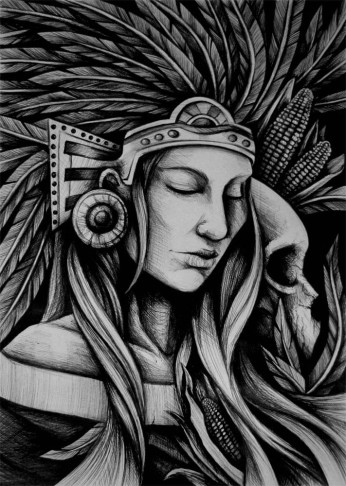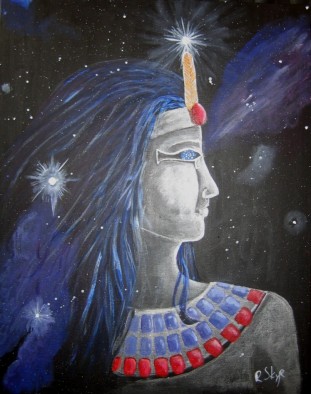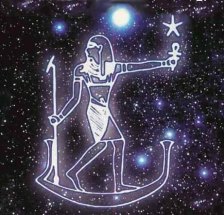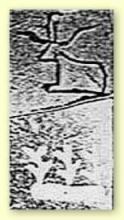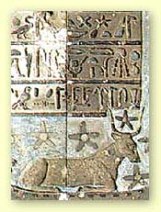
“Inari, Goddes of Prosperity” by ArdiRa
“Inari’s themes are death, kinship, ghosts, fertility and love. Her symbols are foxes, rice and the color red. Among the Japanese, Inari is invoked to bring a long life, blood-red being Her sacred hue. In death, She guides and protects faithful spirits. Portrayed as a vixen, Inari also has strong correlations with love, an emotion that survives even the grave. Rice is a common offering for Inari, as it is a crop to which She brings fertility.
The Obon is a festival for the dead in Japan, where people hold family reunions and religious rituals to honor their departed ancestors and dance to comfort the spirits. Thse observances are fairly easy to duplicate. Gather with friends or family and include rice cakes and fruit as part of your menu planning. Leave out an extra plater of food both for the spirits of the departed and to please Inari.
To increase Inari’s love in any relationship or to draw a lover to you, make this charm: Find a red-colored stone (agate is a good choice), or any red-colored piece of clothing. Put this under the light of a full moon to charge it with emotional fulfillment. Then bless the item saying,
‘Inari be, ever with me.
By this stone [cloth] of red, let love be fed.
When at [on] my side, let love there abide.’
Put the stone in your pocket (so it’s at your side) and carry it when meeting with that special someone.”
(Patricia Telesco, “365 Goddess: a daily guide to the magic and inspiration of the goddess”.)

“Fox Maiden” by Susan Seddon Boulet
“The Japanese rice Goddess liked to wrap herself in a fox’s body. Sometimes, too, She took the shape of a human woman in order to sleep with men, who had excellent crops as a result. One of these men, it was said, realized he was sleeping with the Goddess when he saw a long, furry red tail sticking out from beneath the blankets. He said nothing of it, and She rewarded his discretion by causing all his rice to grow upside down, thus bearing a full harvest that was exempt from the rice tax.
The legendary woman Tamamono-Maye, possibly an incarnation of Inari, lived at court and could change at will into a flying fox. An enemy, however, ended her power of transformation (and her life, some say) by confronting her with a mirror, which was powerful medicine against her magic” (Monaghan, p. 162).

“Inari” by Matthew Meyer
As stated in a previous entry (see June 9th Wakasaname-no-Kami), Inari is a very complex deity. “Inari has been depicted both as male and as female. The most popular representations of Inari, according to scholar Karen Ann Smyers, are a young female food Goddess, an old man carrying rice, and an androgynous bodhisattva…Inari is sometimes identified with other mythological figures. Some scholars suggest that Inari is the figure known in classical Japanese mythology as Ukanomitama or the Kojiki‘s Ōgetsu-Hime; others suggest Inari is the same figure as Toyouke. Some take Inari to be identical to any grain kami.
Inari’s female aspect is often identified or conflated with Dakiniten, a Buddhist deity who is a Japanese transformation of the Indian dakini or with Benzaiten of the Seven Lucky Gods.


Inari is often venerated as a collective of three deities (Inari sanza); since the Kamakura period, this number has sometimes increased to five kami (Inari goza). However, the identification of these kami has varied over time. According to records of Fushimi Inari, the oldest and perhaps most prominent Inari shrine, these kami have included Izanagi, Izanami, Ninigi, and Wakumusubi, in addition to the food deities previously mentioned. The five kami today identified with Inari at Fushimi Inari are Ukanomitama, Sarutahiko, Omiyanome, Tanaka, and Shi. However, at Takekoma Inari, the second-oldest Inari shrine in Japan, the three enshrined deities are Ukanomitama, Ukemochi, and Wakumusubi. According to the Nijūni shaki, the three kami are Ōmiyame no mikoto (water,) Ukanomitama no mikoto (grain,) and Sarutahiko no mikami (land.)” [1]
Sources:
Monaghan, Patricia. The New Book of Goddesses and Heroines, “Inari”.
Wikipedia, “Inari Ōkami“.
Suggested Links:
Kitsune, Akasha. Goddessschool.com, “Inari and Her Kitsune“.
Lysianassa. Bukisa.com, “The History and Significance of the goddess Inari“.
Moon, Eidolon. Fox-moon.com, “Watashi no O-Inari-sama“.
OnMark Productions, “INARI / Oinari / Oinari-sama Shinto God/Goddess of Rice & Food“.
Yoose, Becky. University of Wisconsin – Eau Claire, “INARI = Shinto Rice Kami“.













